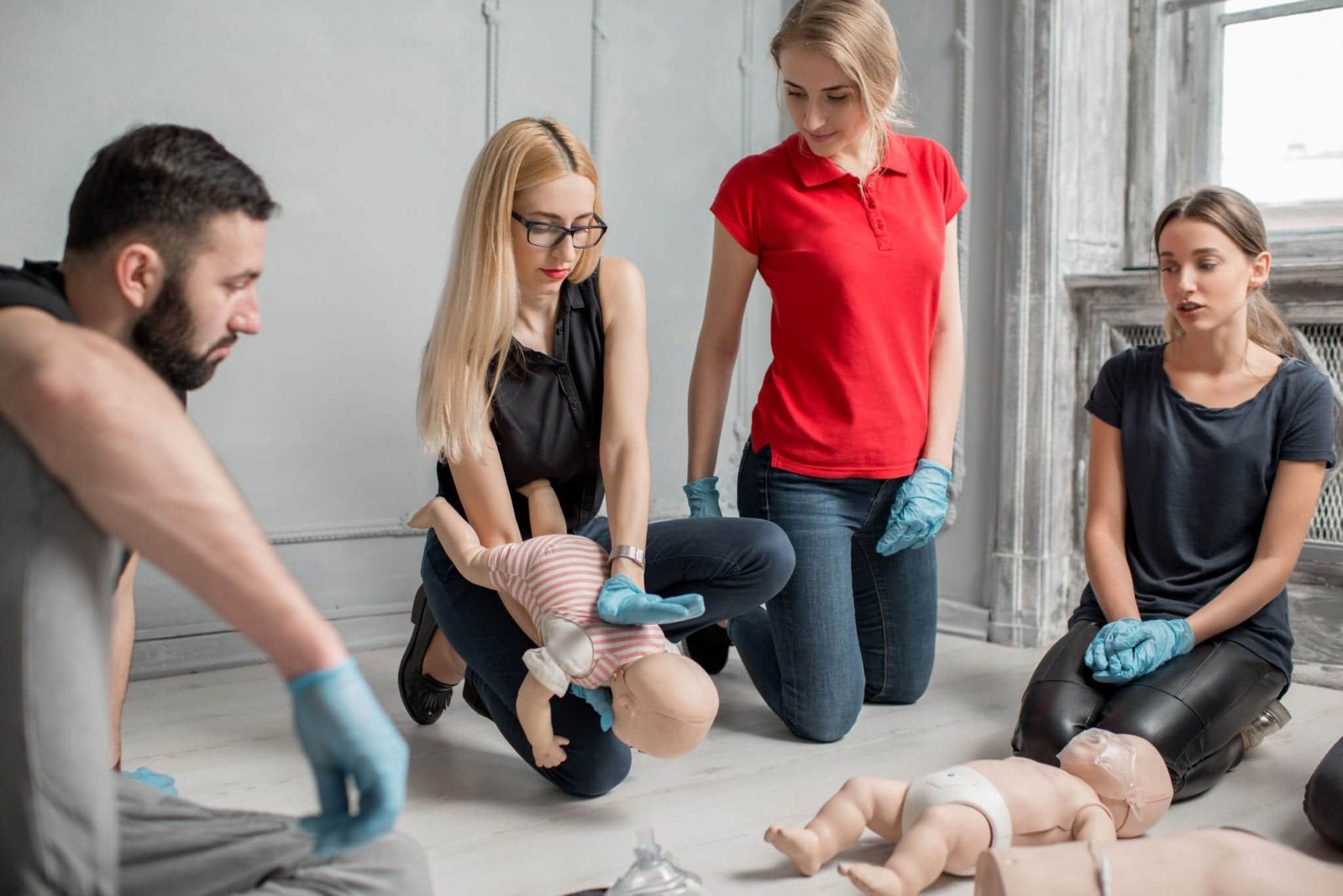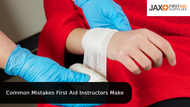Common Mistakes First Aid Instructors Make - And How to Avoid Them
Published by Jax First Aid Supplies on 16th Jul 2025
 What are the common mistakes that first aid instructors make - And how do I avoid them?
What are the common mistakes that first aid instructors make - And how do I avoid them?
Giving highly accurate, engaging and compliant first aid training is a very important responsibility for any first aid trainer. Whether you are an independent first aid or CPR instructor, or a part of an accredited training organisation, making sure your course meets both quality learner expectations and UK legal standards is highly essential. However, even the most experienced of trainers can fall into common pitfalls and issues. These mistakes typically range from outdated information to using incorrect first aid training equipment; which risks compromising the quality and credibility of your training sessions. By understanding these issues, as well as how to prevent them, you can give better, more accurate training; create more learner confidence; as well as uphold the high standards of life saving education. Take advantage of our first aid training sale today; this July only. Stock up on all the essentials you need for your sessions.
Are You Using the Right First Aid Training Supplies?
One of the most overlooked, but critical aspects of first aid instruction is the use of correct, accurate first aid training supplies. The training equipment used in a first aid course doesn’t only reflect your individual professionalism, however can directly impact the learning outcomes. For example, failing to give your learners hands-on experience using a CPR dummy that offers accurate, high quality feedback in a CPR training session can result in learners applying the wrong techniques in real, life-threatening emergencies.
UK guidelines, for example, from the Resuscitation Council UK, speak of the importance of training with feedback-enabled CPR manikins, especially for adult CPR training sessions. If your CPR training dummy is outdated, lacks the realistic anatomy features, or doesn’t allow for the proper ventilation and compression practice, it is time to update your equipment.
Alongside CPR manikins, instructors should include training bandages and dressings in sessions. This equipment can allow trainees to practise accurate and correct first aid bandaging techniques without using up unnecessary sterile supplies. Skipping these practical techniques in a first aid training session greatly undermines learners’ confidence and competence when it comes to a real emergency. A first aid training pack contains essential, practical items and guidance to give essential first aid knowledge in your training sessions.
Are You Teaching Outdated or Incorrect Techniques?
Another common issue with first aid instructors is using outdated content, techniques or failing to keep up with up-to-date UK protocols and information. First aid guidance evolves constantly, typically in response to new evidence or safety standards. For example, the Resuscitation Council UK often updates its CPR guidelines. Instructors continuing to teach old techniques, for example, the incorrect compression depths in CPR, or not emphasising the important role of defibrillators, risk learners having ineffective or even dangerous knowledge and skill. Refresher courses for instructors are helpful to keep good credibility and accuracy within your own training sessions.
UK employers are bound by the Health and Safety (First-Aid) Regulations 1981, which means first aid training must meet the needs and standards of the specific workplaces’ risks. Teaching general content without conforming the session to industry specific risks, such as burns in a kitchen, or heavy bleeding injuries on a construction site, can be a huge oversight. Using scenario based first aid training with realistic equipment and roleplay helps to ensure learners are better prepared for their working environment. A helpful tool to use alongside a CPR manikin is fake wounds for first aid training, which feature realistic injuries. They are perfect for first aid trainers to teach correct techniques for wound care, bandaging, and dealing with embedded objects.

Do You Neglect the Psychological Side of First Aid?
While technical skills are very important, some instructors tend to not acknowledge the emotional and psychological impact of first aid training scenarios. Trainees who lack confidence, freeze in high stress situations, or fear getting things wrong could hesitate to intervene in a real emergency. Good first aid training includes not only how techniques work, but also why they work. Helping trainees to understand the cruciality of staying calm, assessing the scene before intervening, and offering reassurance to any casualties.
Creating a supportive, safe learning environment is highly important. It will greatly help to boost trainee confidence within your training sessions if you encourage questions, repeat demonstrations, and offer plenty of reassurance. Using simple, approachable language, accurate scenarios and highly realistic equipment such as a first aid kit that reflects real world settings can majorly help learners to feel much more comfortable. Including practice with a foil blanket, nitrile gloves, and eyewash stations can reinforce the importance of first aid whilst increasing learner confidence with unfamiliar tools.
Are You Giving Enough Hands-On Experience?
One of the most common mistakes in first aid training sessions is relying too much on theory. Watching videos or listening to lectures, whilst very important, can never replace practical, hands-on training. It is highly recommended that trainees practise each skill at least a few times throughout the training course. Unfortunately however, when time is short or resources are limited, instructors can tend to gloss over practical techniques and activities, or rush through essential modules.
The most effective training sessions tend to include repeatable, realistic practice. This means using first aid training equipment that reflects what trainees may find in a workplace or a public setting. The basic training would include trainees being able to accurately apply a bandage, use a tourniquet (where relevant), and safely deliver CPR on a manikin. Providing individual training first aid kits, rather than sharing, can also help to comply with post-COVID infection control standards.
Are You Properly Preparing Learners for Real Emergencies?
Finally, many first aid instructors tend to make the frequent mistake of not connecting the training room to the real world. Teaching techniques without realistic scenarios or good context can leave learners completely underprepared. For example, teaching how to treat burns without explaining what is typically available in a burns first aid kit, or failing to address the stress of calling 999, can completely limit the optimal effectiveness of the first aid training.
Learners should leave a training course with both the skills and confidence to act under pressure in a real emergency. This comes best from training that is highly practical, emotionally supportive, and rooted in real-life UK emergency scenarios. Instructors who use this approach are far more likely to inspire confident first aiders; capable of making a big difference when it counts.
Setting a Higher Standard in First Aid Instruction
A great responsibility comes with being a first aid trainer, and even small mistakes can greatly affect the safety of the trainee or any casualty the trainee uses their techniques on, as well as their emergency readiness. By updating your own knowledge regularly, using appropriate first aid training equipment, and focusing on both the practical and informative sides of training, you can deliver sessions that are not only compliant with UK standards but truly effective. Investing in high quality first aid training supplies isn't just about professionalism; it is about preparing your students to save lives. Take advantage of our first aid training sale today, which lasts this July only.







